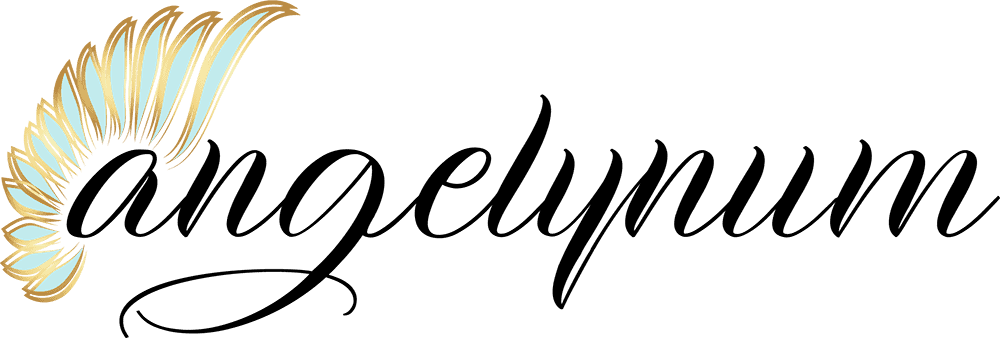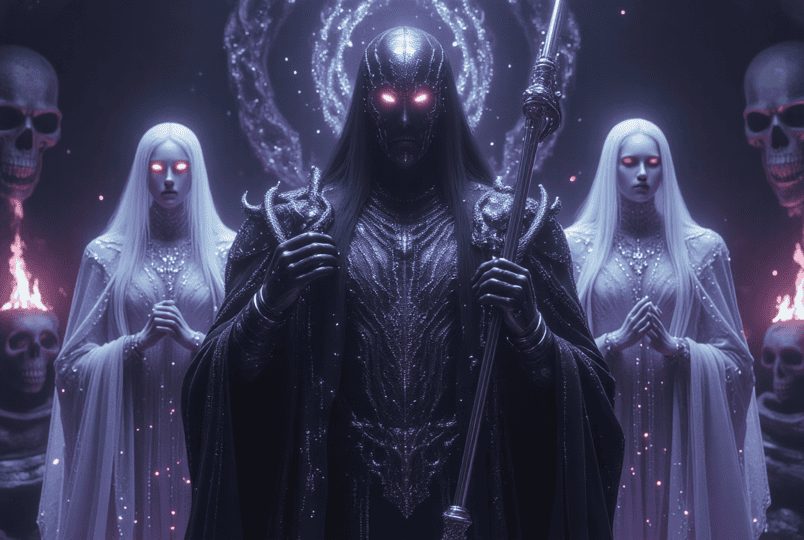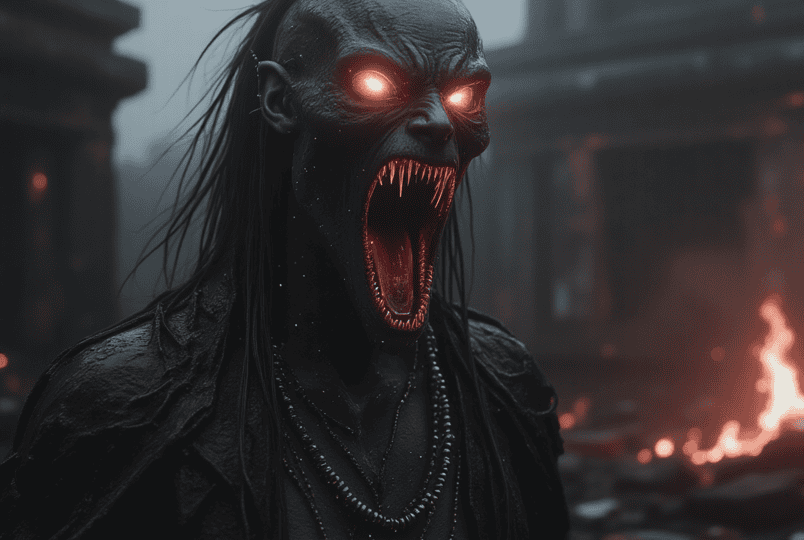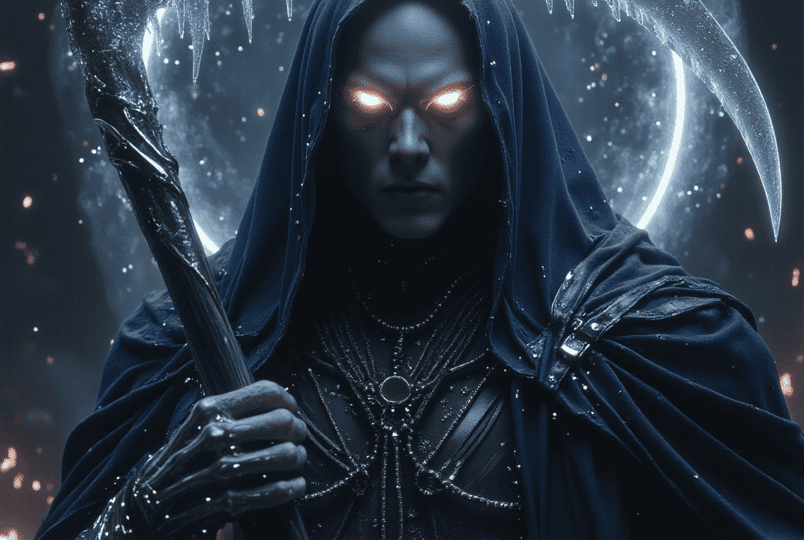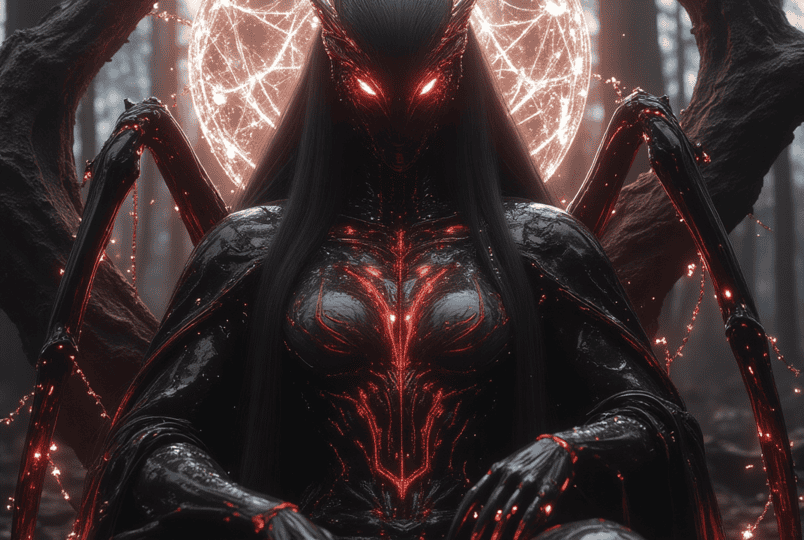All cultures across the world have their own version of the Grim Reaper.
These stories give us a fascinating insight into how people around the world coped with their mortality and the fear of death.
Some of these beings are terrifying, while others gently guide souls to the other side.
More often than not, they serve as symbols of the inevitable.
Let’s explore some lesser-known reapers from various cultures.
Mara: The Nightmare Spirit
In Norse mythology, Mara is the spirit that lurks in the realm of dreams, sitting on people’s chests and causing nightmares.
She’s not your classic Grim Reaper, but she can cause death through her torment. She has the power to mess with your mind.
People believed Mara could turn a good night’s sleep into a waking nightmare that left you haunted or even dead.
She embodies the fear of death, and puts it in a different perspective.
She shows that we don’t just fear the end of life – we’re terrified of the unknown.
Interestingly enough, both Mara and Mora are death-associated beings present in Slavic mythology también.
The former is an actual goddess of death, and the latter is a nightmare-inducing demon.
Yama’s Daughters: Guides to the Afterlife
In India, stories about death often involve Yama, the god of death. However, he’s not alone.
Sometimes, he’s accompanied by his daughters, who serve as guides for souls heading into the afterlife.
These ghostly women are often presented as dark figures, unsettling and ghastly. And they weren’t always benevolent, either!
At times, they would indeed guide souls to the other side, but other times, they would trap souls, keeping them from moving on.
These “reapers” add another layer of eeriness to the journey of death, emphasizing that crossing into the afterlife isn’t always a gentle process.
They’re both guides and gatekeepers, embodying the thin line between life and death.
Pishacha: The Flesh-Eating Spirits
In Hindu and Buddhist lore, Pishachas are the creepy flesh-eating spirits that haunt graveyards and battlefields.
They’re death’s vultures, feeding on decay and despair.
Much like classic reapers, they’re believed to claim the souls of the dying and dead, sometimes dragging them into the underworld or tormenting them in the afterlife.
They’re often depicted as grotesque figures, lurking just beyond sight.
They represent another horrifying aspect of death, which is decay.
Thanatos: The Greek Reaper
In Greek mythology, Thanatos is the personification of death.
He’s not an intimidating reaper; rather, he is shown as a calm, winged creature – a gentle guide. He quietly escorts souls to the underworld without causing fear or pain.
He symbolizes an inevitable, natural end of life.
Este kinder image of death offers a different perspective; it’s not always something to be feared, but part of the natural cycle of life.
Thanatos is the proof that people in ancient Greece saw death as a transition, and not just as a terrifying end.
Ukobach: The Spirit of Transformation
In Maya mythology, Ukobach plays a crucial role in the process of death. It’s a fire spirit that lives in the underworld, and its flames consume the souls of the dead.
It might not be a reaper in the traditional sense, but it does the job – it transforms the soul in the afterlife.
It burns away the old, making way for renacimiento.
Though it sounds intimidating, Ukobach is not a terrifying figure. Its job is simply to purify the soul and help it move on.
It symbolizes both destruction and renewal, emphasizing that death is not just the end – it’s also a new beginning.
Baron Samedi: The Voodoo God
Baron Samedi is a fascinating being from Haitian Voodoo. He’s a colorful, skeleton-clad loa who rules over death and the afterlife.
He’s known for his humorous approach and mischievous nature.
His attitude is confident and cheeky, and he’s often presented wearing a top hat, sunglasses, and smoking cigars.
Much like a reaper, he’s believed to preside over funerals and guide souls to the other side.
However, there’s a twist; Baron Samedi is also a trickster, and he loves to break the rules.
This rebellious streak makes him unique among death-related spirits, and he shows that even in death, we must find room for humor and defiance.
Jorogumo: The Deadly Web Weaver
In Japanese folklore, Jorogumo is a spider yokai that weaves deadly webs to trap victims.
Though mostly known as a spider monster, many stories link her to death, with her webs serving as death traps for unsuspecting prey.
She can appear as a beautiful woman before revealing her true, terrifying form; you could say she’s a reaper in disguise.
Her webs symbolize the inescapable grip of death, catching anyone who wanders too close.
Stories of Jorogumo mix beauty and horror, warning people to be cautious of alluring dangers.
She’s a reminder that death can come cloaked in temptation or deception.
The Black Annis: The Hag
Black Annis is a monstrous hag associated with death and destruction. She’s part of English reaper folklore.
She has sharp claws and a terrifying face, and she’s said to be lurking in the shadows of Dane Hills.
Black Annis is a cautionary tale about the dangers of the wild – a deathly figure that symbolizes the dangers of the unknown.
She’s depicted as always hungry and ready to snatch away the unwary.
She embodies death and danger, and she’s used to warn us that these forces often strike when you least expect them.
A little Aquarius, devoted to writing and embroidery. Through my writing, I hope to empower readers to align with their true selves and navigate life’s mysteries with confidence.
